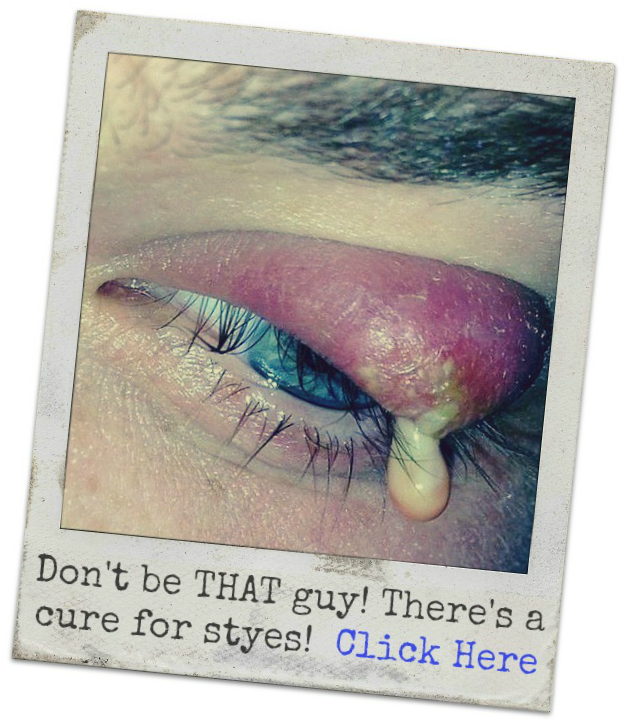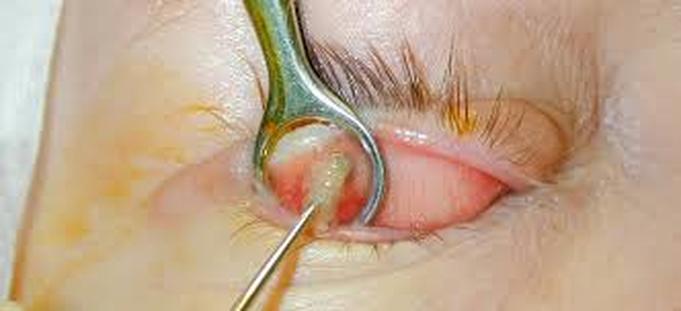CAN I LANCE A STYE OR CHALAZION MYSELF
Never prick or cut open a stye with a sharp object or a lancet yourself. You risk serious eye injury and infection. Contact an eye care professional if you suspect a stye or chalazion needs surgical removal.
A stye is a red abscess or painful bump that forms when bacteria grows in the root follicle of an eyelash sebaceous gland. When one of the small oil glands become infected, it causes a stye to form. If full blockage of the oil gland occurs, it forms a chalzaion.
Styes can usually be resolved with a hot compress or antibiotic eye drops. However, stubborn styes or chalazions may require a surgical procedure called lancing.
Styes can usually be resolved with a hot compress or antibiotic eye drops. However, stubborn styes or chalazions may require a surgical procedure called lancing.
RISK INVOLVED WHEN LANCING
Inner eyelid laceration: the inside of the eyelid, where the flesh rests on the eyeball, is highly sensitive. Attempting to lance the stye’s confined pocket of pus will cause extreme pain.
This will lead to an automatic response to blink and jerk the eye away from the lancet. This can result in a deep cut or tear in the eyelid flesh. Lidocaine must be used to numb the eyelid before lancing a stye.
Sever infection: piercing a stye or chalazion with a sharp object or lancet can raise the potential for serious infection. Generally a surgeon will require a small course of antibiotics before and after stye surgery to prevent infections.
Injury to the eyeball: lancing can inflict various levels of damage to the eye, such as corneal abrasion. Corneal abrasions can cause permanent vision problems, light sensitivity, redness, tearing and proneness to infection. If an object penetrates the eye’s surface seek medical attention without delay.
Lancing is often ineffective: the matter in the abscess is a thick, waxy like substance. Lancing is often ineffective because the thick pus cannot exit through the lancet incision.
Recurring styes: if you attempt to lance a stye yourself, you risk spreading an infection to other defective glands, this can produce new styes to arise or recurrent styes.
Do not attempt to lance a stye at home, this procedure should be conducted by a qualified ophthalmologist or physician to avoid permanent eye damage.
The best method to treating a stye is through care and prevention. If you suspect a stye is forming, certain medicines can prevent a stye if treated early. A warm compress can also help get rid of a stye fast. Also visit https://www.styemedicine.net/
This will lead to an automatic response to blink and jerk the eye away from the lancet. This can result in a deep cut or tear in the eyelid flesh. Lidocaine must be used to numb the eyelid before lancing a stye.
Sever infection: piercing a stye or chalazion with a sharp object or lancet can raise the potential for serious infection. Generally a surgeon will require a small course of antibiotics before and after stye surgery to prevent infections.
Injury to the eyeball: lancing can inflict various levels of damage to the eye, such as corneal abrasion. Corneal abrasions can cause permanent vision problems, light sensitivity, redness, tearing and proneness to infection. If an object penetrates the eye’s surface seek medical attention without delay.
Lancing is often ineffective: the matter in the abscess is a thick, waxy like substance. Lancing is often ineffective because the thick pus cannot exit through the lancet incision.
Recurring styes: if you attempt to lance a stye yourself, you risk spreading an infection to other defective glands, this can produce new styes to arise or recurrent styes.
Do not attempt to lance a stye at home, this procedure should be conducted by a qualified ophthalmologist or physician to avoid permanent eye damage.
The best method to treating a stye is through care and prevention. If you suspect a stye is forming, certain medicines can prevent a stye if treated early. A warm compress can also help get rid of a stye fast. Also visit https://www.styemedicine.net/


